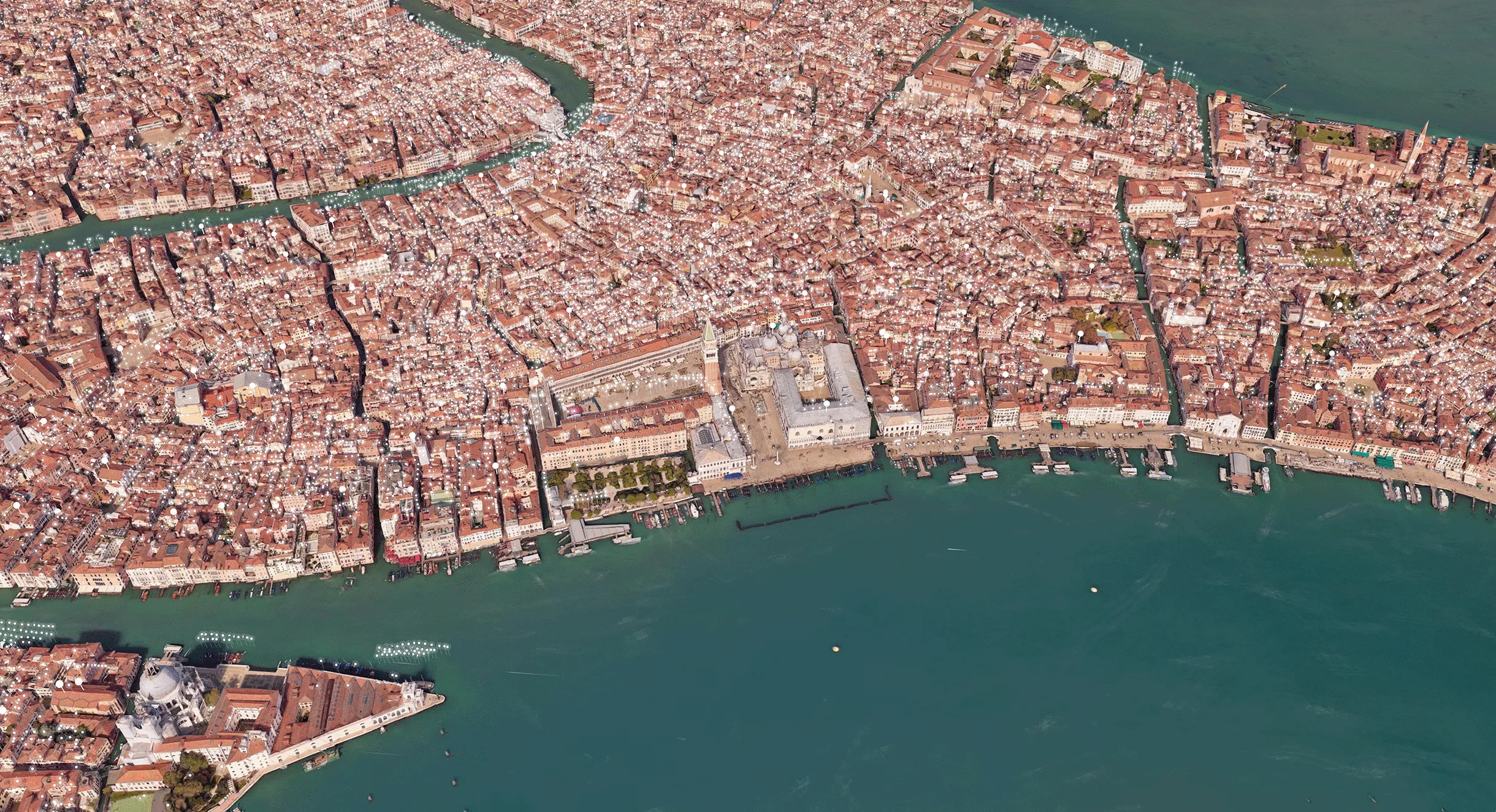Parcels of Venice is a research project (SNSF Grant 185060) developing computational approaches on urban data sources that explores the transformation of space, ownership, and social structures in Venice through the transcription and analysis of historical census, cadastral documents, and secondary sources. The Time Atlas, developed within the project as a data aggregation platform, stands out as one of the most advanced and precise space-time interfaces for navigating the extensive and rigorously structured digital documentation of Venice’s past.
The project explores innovative methodologies at the intersection of information technology and historical research, aiming to interrogate archival sources and reconstruct the urban past of Venice. At its core, the project established a foundational data infrastructure—an “informational skeleton”—based on cadastral sources, maps, and records of individuals. From this foundation, additional historical datasets were progressively integrated, each linked through different spatial and semantic heuristics.
This approach enables large-scale analysis of documentary corpora and the structured extraction of information to generate new historical insights. In this framework, datasets are not endpoints but starting points—tools that support deeper theoretical and interpretive engagement. These interpretive dimensions are developed through doctoral dissertations, student research projects, and thematic workshops, all dedicated to exploring new perspectives on the history of the urban fabric.
The project has benefited from other inputs in terms of digitization, development of specific technologies, scholars' interest and understanding of the epistemology of digital history that have been developed in parallel in the context of the Venice Time Machine initiative and parallel projects such as Replica Project, Linked Books, and GAWS among others. Additional collaborations have been valuable to the project such as, partnerships with the Giorgio Cini Foundation of Venice and the ARCHiVE Center, the Venice State Archives, the Venetian Civic Museums, Europeana, Bibliothèque Nationale de France, and Iconem (Paris).
The project offers through the site and exploration interface, a number of interlinked outputs:
A growing collection of datasets, enriched with semantic tags, translated terms, and entity links
A collaborative spatial interface, Time Atlas, for browsing textual information about ownerships, professions, incomes, urban functions, documents, images, and themes over time.
Interactive Cartographic Interface and Visual Analytics Dashboard developed using the Observable platform, this suite of interactive maps, diagrams, and thematic charts enables users to explore and analyze the datasets of Venice. The platform integrates spatial and semantic data, offering dynamic filters and visual summaries for parcel function, ownership type, income brackets, and geographical distribution.
This tool supports both scholarly inquiry and public engagement, facilitating the interpretation of historical datasets through a combination of cartographic and statistical perspectives. It serves as a bridge between raw archival data and interpretative urban history.
Computational methods for transcription, standardization, disambiguation, textual entries and vectors from map digitised
Peer-reviewed publications on both historical insights and technical approaches
Workshops and student projects involved in collaborating with the development of the components of the data, methods for extracting-curating-interpreting them, dataset enrichment and integration in the Time Atlas interface.
Integration with broader infrastructures like Time Machine and links to repositories like GitHub and Zenodo
By making historical cadastral data both explorable and extensible, Parcels of Venice contributes to the development of a common digital infrastructure for urban history and sets a precedent for collaborative data production, sharing, and reuse.
